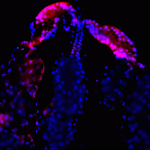Link to Pubmed [PMID] – 36730229
Link to DOI – 10.1371/journal.pone.0273798
PLoS One 2023 ; 18(2): e0273798
Current knowledge of dengue virus (DENV) transmission provides only a partial understanding of a complex and dynamic system yielding a public health track record that has more failures than successes. An important part of the problem is that the foundation for contemporary interventions includes a series of longstanding, but untested, assumptions based on a relatively small portion of the human population; i.e., people who are convenient to study because they manifest clinically apparent disease. Approaching dengue from the perspective of people with overt illness has produced an extensive body of useful literature. It has not, however, fully embraced heterogeneities in virus transmission dynamics that are increasingly recognized as key information still missing in the struggle to control the most important insect-transmitted viral infection of humans. Only in the last 20 years have there been significant efforts to carry out comprehensive longitudinal dengue studies. This manuscript provides the rationale and comprehensive, integrated description of the methodology for a five-year longitudinal cohort study based in the tropical city of Iquitos, in the heart of the Peruvian Amazon. Primary data collection for this study was completed in 2019. Although some manuscripts have been published to date, our principal objective here is to support subsequent publications by describing in detail the structure, methodology, and significance of a specific research program. Our project was designed to study people across the entire continuum of disease, with the ultimate goal of quantifying heterogeneities in human variables that affect DENV transmission dynamics and prevention. Because our study design is applicable to other Aedes transmitted viruses, we used it to gain insights into Zika virus (ZIKV) transmission when during the project period ZIKV was introduced and circulated in Iquitos. Our prospective contact cluster investigation design was initiated by detecttion of a person with a symptomatic DENV infection and then followed that person’s immediate contacts. This allowed us to monitor individuals at high risk of DENV infection, including people with clinically inapparent and mild infections that are otherwise difficult to detect. We aimed to fill knowledge gaps by defining the contribution to DENV transmission dynamics of (1) the understudied majority of DENV-infected people with inapparent and mild infections and (2) epidemiological, entomological, and socio-behavioral sources of heterogeneity. By accounting for factors underlying variation in each person’s contribution to transmission we sought to better determine the type and extent of effort needed to better prevent virus transmission and disease.

